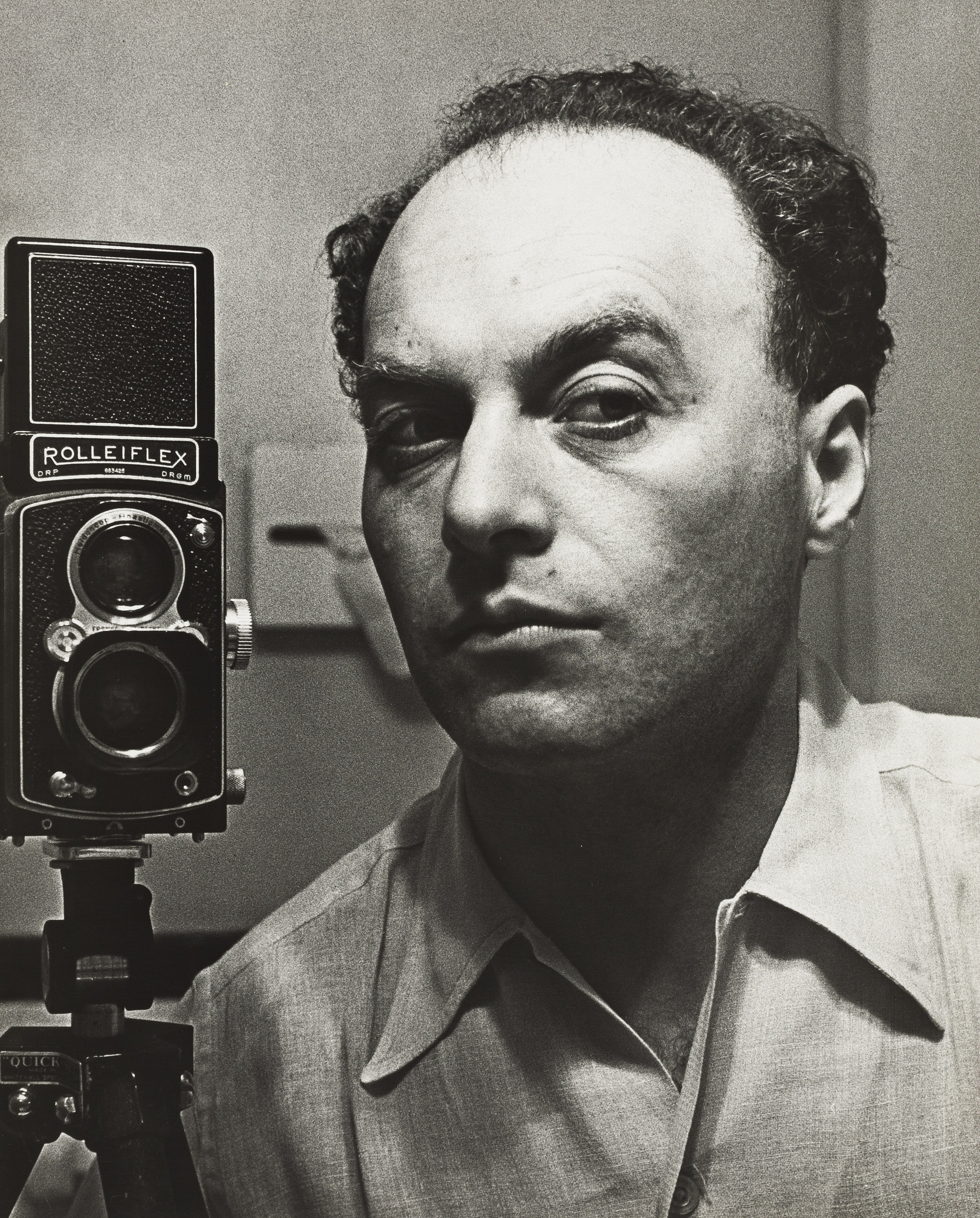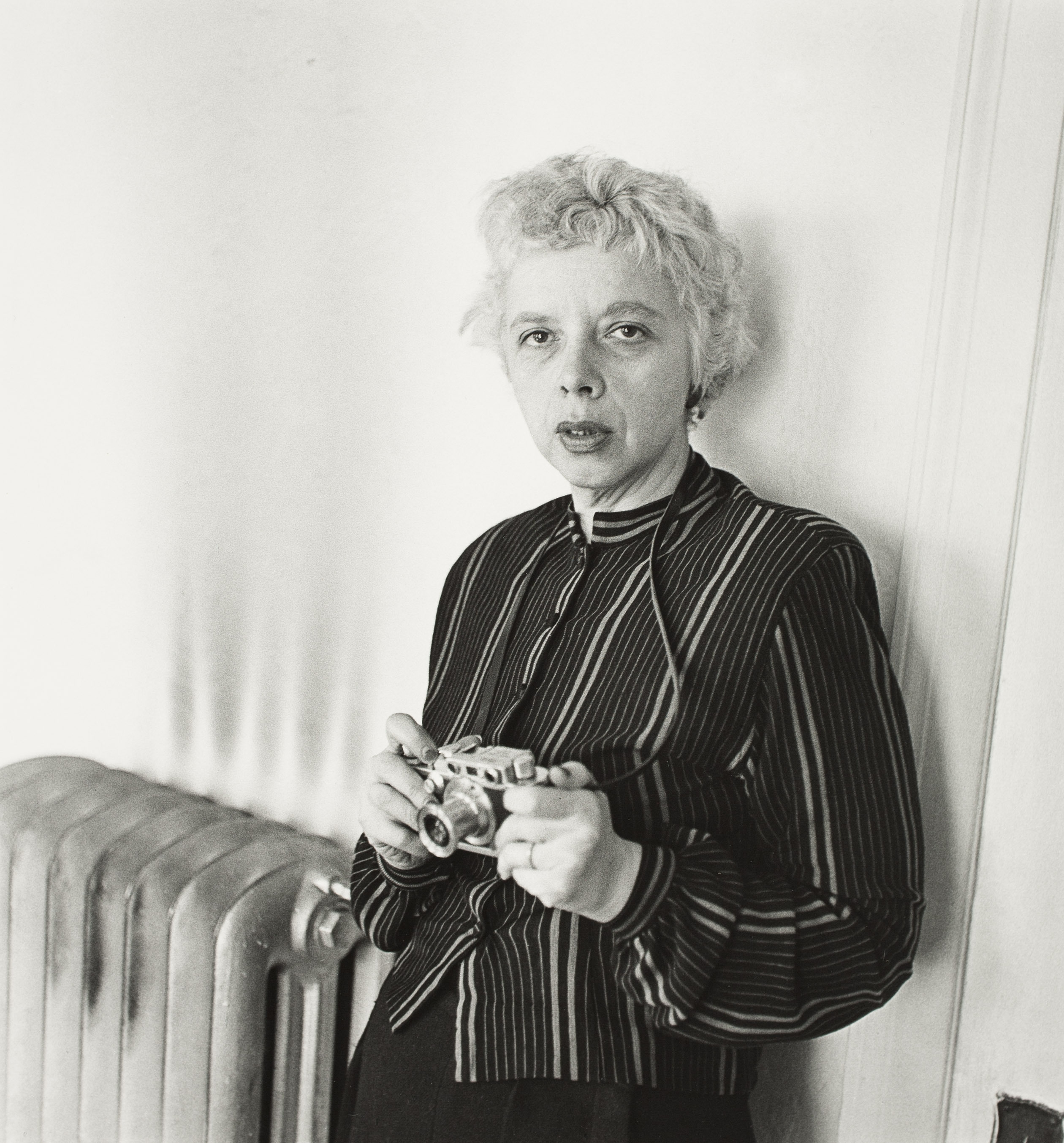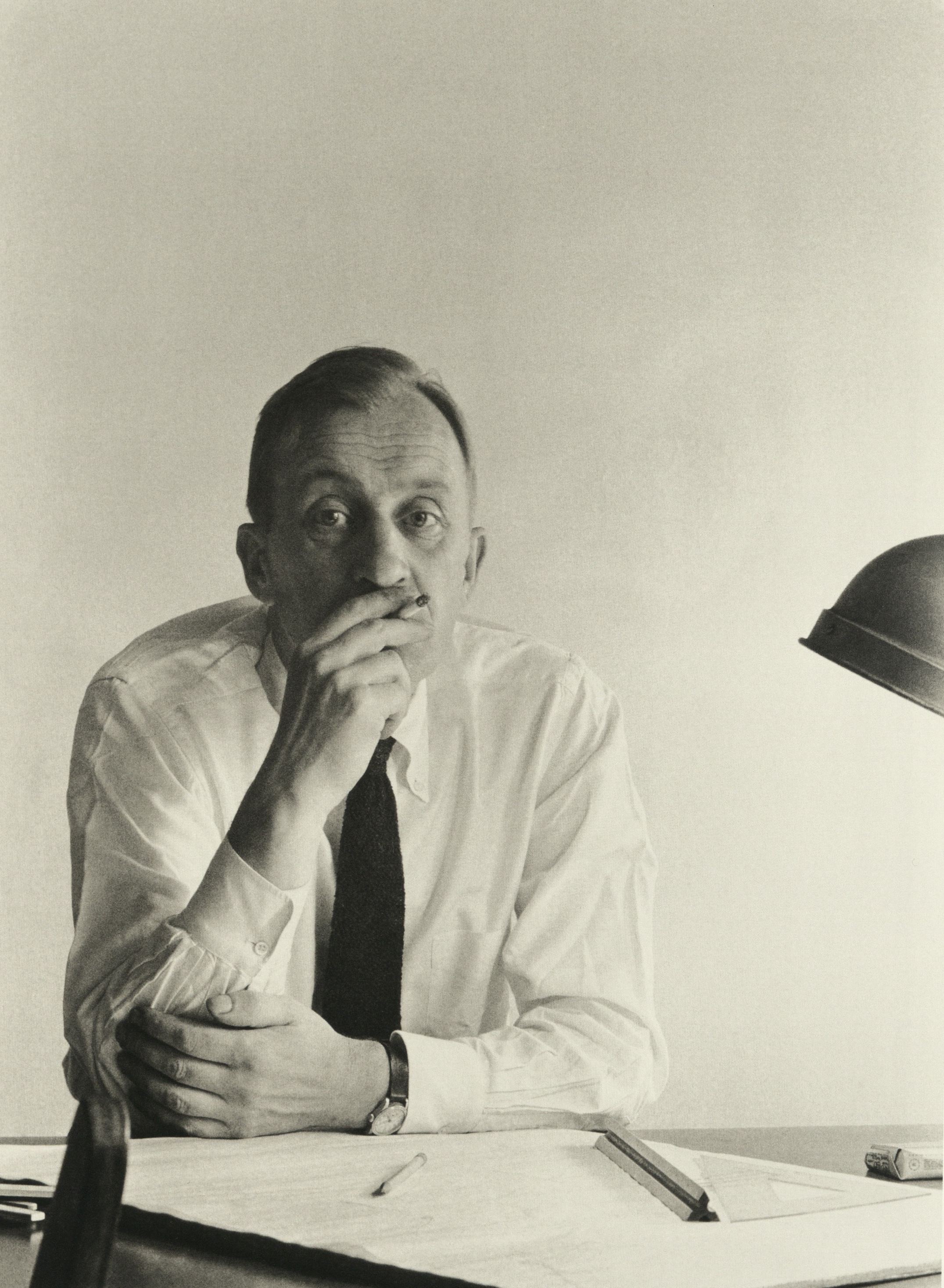Archive
Hermann Landshoff
- Hermann
- Landshoff
- 02-03-1905
- München (DE)
- 09-1986
- New York City (US)
- Photographer
Besides outdoor fashion shots, Hermann Landshoff was a portrait and street photographer. During his time in New York, he captured the cultural, artistic and intellectual émigré scene as well as his photographer colleagues.
Word Count: 33

Hermann Landshoff, Selfportrait, New York 1942 (© bpk / Münchner Stadtmuseum, Sammlung Fotografie / Archiv Landshoff). 
Hermann Landshoff, Die Fotografin Lisette Model, New York 1948 (© bpk / Münchner Stadtmuseum, Sammlung Fotografie / Archiv Landshoff). 
Hermann Landshoff, Der Grafikdesigner, Fotograf und Art Director Alexey Brodovitch in seiner Wohnung, 1942–45, New York (© bpk / Münchner Stadtmuseum, Sammlung Fotografie / Archiv Landshoff). Displaced Visions. Émigré Photographers of the 20th Century, edited by Nissan N. Perez, exh. cat. The Israel Museum, Jerusalem, 2013.
Hermann Landshoff. Portrait, Mode, Architektur. Retrospektive 1930–1970, edited by Ulrich Pohlmann and Andreas Landshoff, exh. cat. Münchner Stadtmuseum – Sammlung Fotografie, Munich, 2013.
Landshoff, Hermann. Autograph 1939/40 (Münchner Stadtmuseum – Sammlung Fotografie, Munich, 1939/40).
New York Photography 1890–1950. Von Stieglitz bis Man Ray, edited by Ortrud Westheider and Michael Philipp, exh. cat Bucerius Kunst Forum, Hamburg, 2012.
Roth, Helene. “First Pictures: New York through the lens of emigrated European photographers in the 1930s and 1940s.” Contact Zones: Photography, Migration and Cultural Encounters in the United States, edited by Justin Carville and Sigrid Lien, Leuven University Press, 2021, pp. 111–132.
Unbelichtet. Münchner Fotografen im Exil, edited by Tatjana Neef, exh. cat. Jüdisches Museum München, Munich, 2010.
Word Count: 174
Hermann Landshoff Archive, Münchner Stadtmuseum – Sammlung Fotografie, Munich.
Hermann Landshoff Photographs, Deutsche Digitale Bibliothek.
Word Count: 15
Paris, France (1933-1939); Internment Camp, Algeria (1939-1940); Marseille, Capvern-les-Bains, France (1940-1941); Lisbon, Portugal (1941); New York City, USA (1941-1986).
227 East 57th Street, Sutton Place, New York City (residence and workplace, 1941–1986).
- New York
- Helene Roth. "Hermann Landshoff." METROMOD Archive, 2021, https://archive.metromod.net/viewer.p/69/2948/object/5138-7554742, last modified: 08-01-2022.
-
Walter SandersPhotographerNew York
Walter Sanders was a German émigré photographer. In 1938 he arrived in New York, where he worked from 1939 until the end of his life for the Black Star agency and, from 1944, for Life magazine.
Word Count: 33
Josef BreitenbachPhotographerNew YorkOn arriving in New York in 1941, the German photographer Josef Breitenbach tried to restart as a portrait, street and experimental photographer, as well as a teacher of photo-history and techniques.
Word Count: 30
Andreas FeiningerPhotographerWriterEditorNew YorkAndreas Feininger, was a German émigré photographer who arrived in New York with his wife Wysse Feininger in 1939. He started a lifelong career exploring the city's streets, working as a photojournalist and writing a large number of photography manuals.
Word Count: 39
Ruth BernhardPhotographerNew YorkRuth Bernhard was a German émigré photographer who lived in New York from the 1920s to the 1940s. Beside her series on female nudes, her place in the photography network, as well as in the New York queer scene, is unknown and understudied.
Word Count: 43
Lisette ModelPhotographerNew YorkLisette Model was an Austrian-born photographer who lived in New York with her husband Evsa Model after emigrating from France. Her street photographs capturing the curiosities of everyday life quickly caught the interest of museums and magazines.
Word Count: 37
Fred SteinPhotographerLawyerNew YorkAlways accompanied by his camera, the German émigré photographer Fred Stein discovered New York City during the 1940s and 1950s. His pictures provide an human and multifaceted view of the metropolis.
Word Count: 31
Alexey BrodovitchPhotographerArt DirectorGraphic DesignerNew YorkAlexey Brodovitch was a Belarus-born émigré graphic artist, art director and photographer who, from 1933, worked in New York for Harper’s Bazaar magazine and at the New School for Social Research.
Word Count: 31
Charles LeirensPhotographerMusicianMusicologistNew YorkCharles Leirens was a Belgian-born musician and photographer who emigrated to New York in 1941. While publishing two books on Belgian music, he also gave courses in musicology and photography at the New School for Social Research.
Word Count: 36
Ernest NashPhotographerArchaeologistLawyerNew YorkErnest Nash was a German born photographer, who pursued his photographic as well as an archeologic interest in Roman architecture after his emigration to New York in 1939. Besides this research interest, he also worked as a portrait photographer and publisher.
Word Count: 40
Ruth JacobiPhotographerNew YorkRuth Jacobi was a German-speaking, Polish-born photographer who emigrated in 1935 to New York, where she opened a studio together with her sister Lotte Jacobi. She later had her own portrait studio.
Word Count: 31
Lilly JossPhotographerNew YorkLilly Joss was an émigré freelance photographer in New York. She worked for the Black Star photo agency and magazines and was also a portrait and theatre photographer.
Word Count: 28
Fritz HenlePhotographerNew YorkFritz Henle was a German Jewish photographer who emigrated in 1936 to New York, where he worked as a photojournalist for various magazines. He also published several photobooks of his travels throughout North America and Asia.
Word Count: 35
Carola GregorPhotographerSculptorNew YorkThe German émigré photographer Carola Gregor was an animal and child photographer and published some of her work in magazines and books. Today her work and life are almost forgotten.
Word Count: 30
Rudy BurckhardtPhotographerFilmmakerPainterNew YorkRudy Burckhardt was a Swiss-born photographer, filmmaker and painter who emigrated from Basle to New York City in 1935. He was well networked within the emerging Abstract Expressionist art scene of 1940s' and 50s'.
Word Count: 33
Trude FleischmannPhotographerNew YorkTrude Fleischmann was an Austrian-Jewish portrait and dance photographer who emigrated in 1939 to New York, where she opened a studio in Midtown Manhattan with the photographer Frank Elmer.
Word Count: 28
J.J. Augustin Incorporated PublisherPublishing HouseNew YorkJ.J. Augustin was a German publishing house in Glückstadt with a long history, going back to 1632. In 1936 the American branch opened in New York with a large artistic and cultural focus.
Word Count: 33
Pantheon BooksPublishing HouseNew YorkPantheon Books was a publishing house founded in 1942 by the German émigré Kurt Wolff (1887–1963) and aimed at the exiled European community in New York.
Word Count: 24
Querido Inc.Publishing HouseNew YorkFritz H. Landshoff’s Querido publishing house was originally an offshoot of Emanuel Querido's Querido Uitgeverij Dutch publishing house in Amsterdam. Querido Verlag was created in 1933 to publish work by German political exiles.
Word Count: 33
SpiratonePhoto SupplierNew YorkSpiratone was a photo company and photo supplier founded in 1941 by the Austrian émigré family Hans (1888–1944) and Paula Spira (?–?) and their son Fred Spira (1924–2007).
Word Count: 24
Lotte JacobiPhotographerNew YorkIn October 1935 the German émigré photographer Lotte Jacobi, together with her sister Ruth Jacobi, opened a photo studio on 57th Street. The two sisters had to leave their parents' photo studio in Berlin in the 1930s and emigrated to New York.
Word Count: 41
Vladimir BobritskyPainterScene DesignerGraphic ArtistMusicianIstanbulBobritsky worked at the Theatre des Petits Champs, where he successfully dealt with stage designs and costumes, at the same time he participated in the Union of Russian Painters in Constantinople.
Word Count: 31
YllaPhotographerNew YorkYlla was an Austrian-born photographer who emigrated to New York in 1941. Specialising in animal photography, she produced not only studio photographs, but also shot outside on urban locations in the metropolis.
Word Count: 31